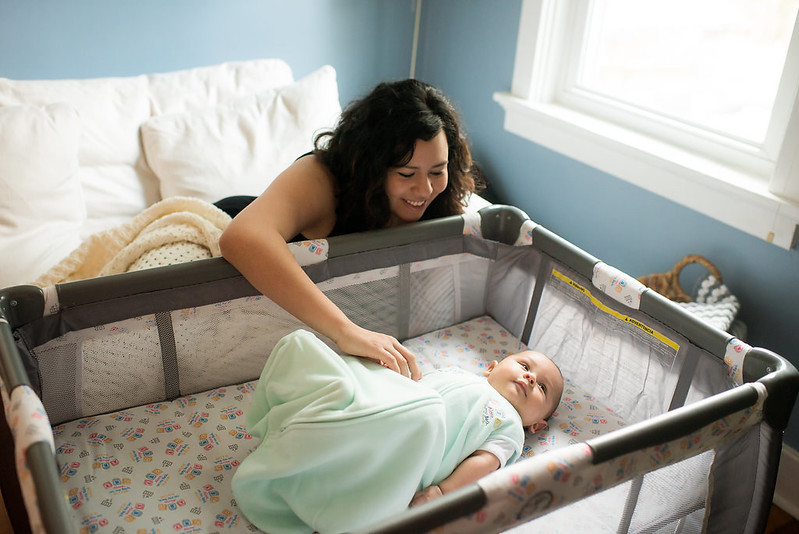Following Safe Sleep practices is a way to keep your baby safe while sleeping. Infants are safest when they sleep in their own crib, bassinet, or portable crib. Sometimes, healthy infants can unexpectedly die if they are placed in an unsafe sleep environment.

To create a safe sleep environment for your baby, follow these steps every night and during naptime:
- Always lay your baby to sleep on their back during naps and night time
- Place your baby to sleep in a safety-approved crib with a firm sleep surface. Cover mattress with a tight fitted sheet
- To avoid suffocation or entrapment, keep soft objects (ex: pillows, loose blankets, bumpers) out of the baby's sleeping area
- Do not allow your baby to sleep in an adult bed, couch, or chair, alone, with you, or with anyone else.
- Keep your baby's crib in the same room you sleep in for the first year of life. Room sharing is recommended NOT bed sharing
- Seating devices (ex: bouncy seats, swings, infant carriers, strollers) should not be used for routine sleep. Wedges and positioners should not be used
- Do not smoke during pregnancy or allow your baby to be exposed to smoke
- Do not allow your baby to get too hot while sleeping. Avoid over-bundling and covering the baby's face should be avoided
- Breastfeeding is recommended
- Allow your baby a dry pacifier (not attached to a string or clip) during sleep times
- Do not fall asleep while holding your baby
- Follow healthcare provider's guidelines for health checkups and vaccine administration
- Tell anyone who cares for your baby to follow these safe sleep practices
Remember the ABC's of Safe Sleep!
Alone
On the Back
In a Crib